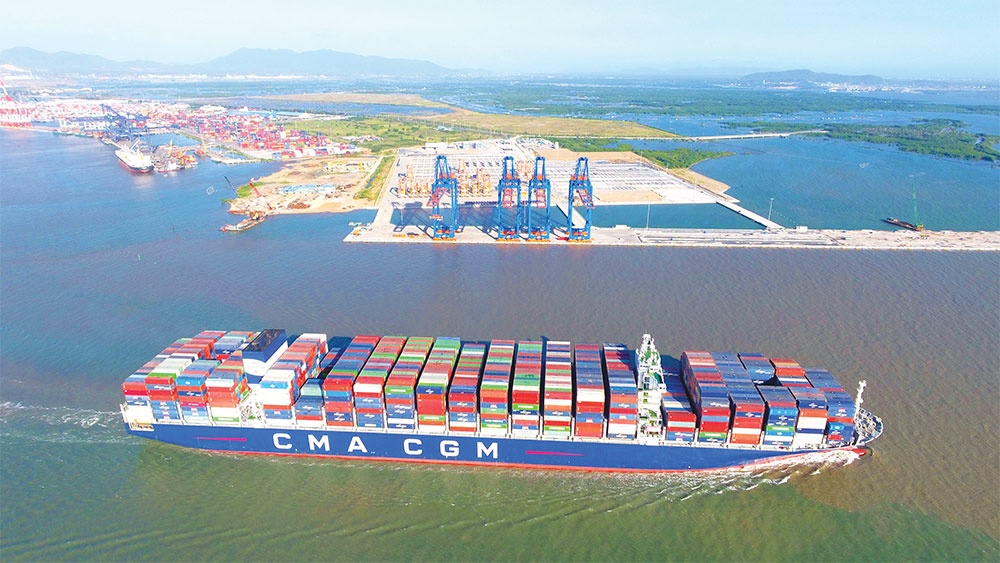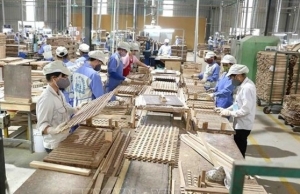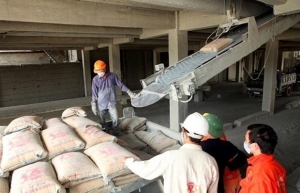Breakthroughs sought in order to curb drop in export figures
After a year of record sales, exports of agro-forestry-fishery products are decreasing sharply, and numerous businesses are stunned by the situation changing so quickly, from having too many orders to waiting for them to come in.
 |
| Breakthroughs sought in order to curb drop in export figures, illustration photo/ Source: Shutterstock |
Tran Van Linh, CEO of Thuan Phuoc Seafoods and Trading Corporation, said that the business was working overtime through the night this time last year, and refusing orders because of limited time and supplies. But since the beginning of the year, they have only signed a few of small orders. Some employees have even taken a break from work because production is so minimal.
“Numerous large customers in the US and EU markets mean that the inventory for shrimp and other items is still significant, so most do not make large orders. In negotiation of just a few of orders, they ask for large discounts,” said Linh. “Many companies that want to maintain production have accepted to sell at cost, or even suffered some losses to gain money, just to maintain the company’s operation and pay the bank’s loans.”
A representative of Son Tra Seafood Processing Co., Ltd. said that at this time last year, they had exported more than 30 tonnes of goods, but such exports are down 30 per cent so far this year.
“After the reopening of the Chinese market that seafood exporters look forward to the most, orders no longer match the figures from before,” the representative said. “The company has cut half of its 250 employees.”
Wood exporters are also falling into a gloomy production cycle. Do Thi Kim Loan, general director of Sao Nam Co., Ltd., a furniture producer, said that the US was the major export market, accounting for about 90 per cent of the company’s exports, but orders were now only at about 65 per cent of last year.
Export turnover in April was $27.54 billion, down 7.3 per cent on-month, and 17 per cent on-year. In the first four months of the year, export value was estimated at $108.57 billion, down 11.8 per cent on-year. The Ministry of Industry and Trade (MoIT) forecasted that total export and import turnover in the whole year will be around $600 billion, much lower than the $775-800 billion target.
The General Statistics Office reported total export and import values in the first four months at $210.78 billion, including $102.22 billion of imports. Despite a high trade surplus of $6.35 billion, much higher than the same period last year at $2.35 billion, the two-digit decline in both exports and imports confirms serious difficulties in production and business.
Looking at the structure of export goods so far this year, export of processed industrial products is estimated at $96.1 billion, accounting for 88.5 per cent, but the sector is facing difficulties due to the general decline in demand worldwide.
Export of such products as textiles, footwear, electronic and computers, and furniture decreased by up to 20 per cent, while industries like rubber and seafood reduced by more than 25 per cent. The total export turnover of textiles and garments in the first quarter of the year only reached $8.7 billion, down 18.63 per cent on-year, which is a sharp decrease compared to the same period many years ago.
According to the MoIT, there are many reasons why the production and export of all commodities has decreased sharply in 2023. In particular, the export markets are struggling with challenges due to high inflation and the decline of purchasing power, especially non-essential consumer goods. Industries such as textiles and garments, leather and footwear, timber, and seafood, whose main export markets are the US and EU, witnessed the biggest decline.
Besides this, the costs of raw materials, input materials, labour, and transportation costs have soared while the selling export prices have not, reducing competitiveness.
Numerous solutions for export have been considered by the MoIT. Nguyen Ngoc Thanh, deputy director general of the MoIT’s Agency for Industry, suggested utilising opportunities in public projects to consume items as steel, construction materials, vehicles, construction and manufacturing mechanics.
For major export industries, Thanh emphasised that products should meet green standards of exporting markets, in addition to looking for new opportunities.
“For textiles, leather, and footwear orders, in many export markets the first requirement is quality, then speed. Enterprises must study and invest in technologies and human resources to meet the new requirements,” Thanh said. “The agency will continue to monitor and coordinate with businesses and industries to jointly come up with solutions, and recommending relevant policies to remove current difficulties.”
Both developing traditional markets and diversifying export markets are solutions implemented by departments and sectors. Nguyen Dinh Dai, director general of northern Lang Son province’s Department of Industry and Trade, said cooperation with the Chinese market was key.
“We have already organised many discussions with China’s Guangxi province to promote two-way trade between Lang Son and Guangxi. Moreover, many departmental and agency-level delegations of both also exchanged, negotiated, and signed agreements to promote cooperation in all fields, especially imports and exports,” Dai said.
The government also requires the MoIT to find solutions to increase exports and closely control imports, and take advantages of commitments in signed free trade agreements (FTAs). The MoIT is now working with Vietnam’s trade offices overseas to seek more information from markets to provide timely consultancy for the government and the prime minister on how to boost exports.
At last month’s conference on trade promotion, MoIT Minister Nguyen Hong Dien said the country needed to boost negotiations, take advantage of FTAs, and enhance trade promotion to connect directly with foreign trade agencies to learn about their markets.
“The MoIT will soon connect so that local associations and businesses can contact and exchange directly with Vietnamese trade offices overseas to solve current problems, thereby promoting exports to foreign countries and making them more efficient and sustainable,” Dien said.
 | EUDR imposes new regulations on timber exporters Exporters will have to demonstrate that a variety of products, including wood, are not associated with deforestation in order to access the EU market after a landmark law was approved last week. |
 | Exporters anxious over EU carbon tax implementation With the European Union to begin use of the Carbon Border Adjustment Mechanism in October, the changes will have a direct impact on four categories of industrial products exported by Vietnam to the EU. |
 | Vietnam's exports plunge in first quarter Vietnam's exports are down almost 12 per cent in the first four months of the year, with some sectors reporting declines of between 6 and 19 per cent. |
 | A strenuous year ahead in cement Vietnam’s cement and clinker export in the first four months of this year continued to be hurt by high inflation in major cement export markets. |
What the stars mean:
★ Poor ★ ★ Promising ★★★ Good ★★★★ Very good ★★★★★ Exceptional
Related Contents
Latest News
More News
- Acecook Vietnam: 30 years of creating happiness (January 08, 2026 | 08:00)
- Sustainability a core value for DKSH’s vision (January 07, 2026 | 16:00)
- People encouraged to contribute and grow at AstraZeneca Vietnam (January 07, 2026 | 15:48)
- Dat Bike accelerates sustainable mobility (January 07, 2026 | 15:24)
- Innovation to support modern healthcare development (January 07, 2026 | 10:00)
- Six localities record double-digit growth as regional performance diverges in 2025 (January 06, 2026 | 18:00)
- E-commerce market undergoes transformation amid rising competition and regulation (January 06, 2026 | 17:54)
- Vietnam’s industrial output hits seven-year high in 2025 (January 06, 2026 | 17:47)
- GELEX’s credit rating outlook upgraded to 'Positive' by VIS Rating (January 06, 2026 | 16:49)
- Finance sector lays firm groundwork for 2026 after major reform (January 06, 2026 | 15:30)

 Tag:
Tag:



















 Mobile Version
Mobile Version